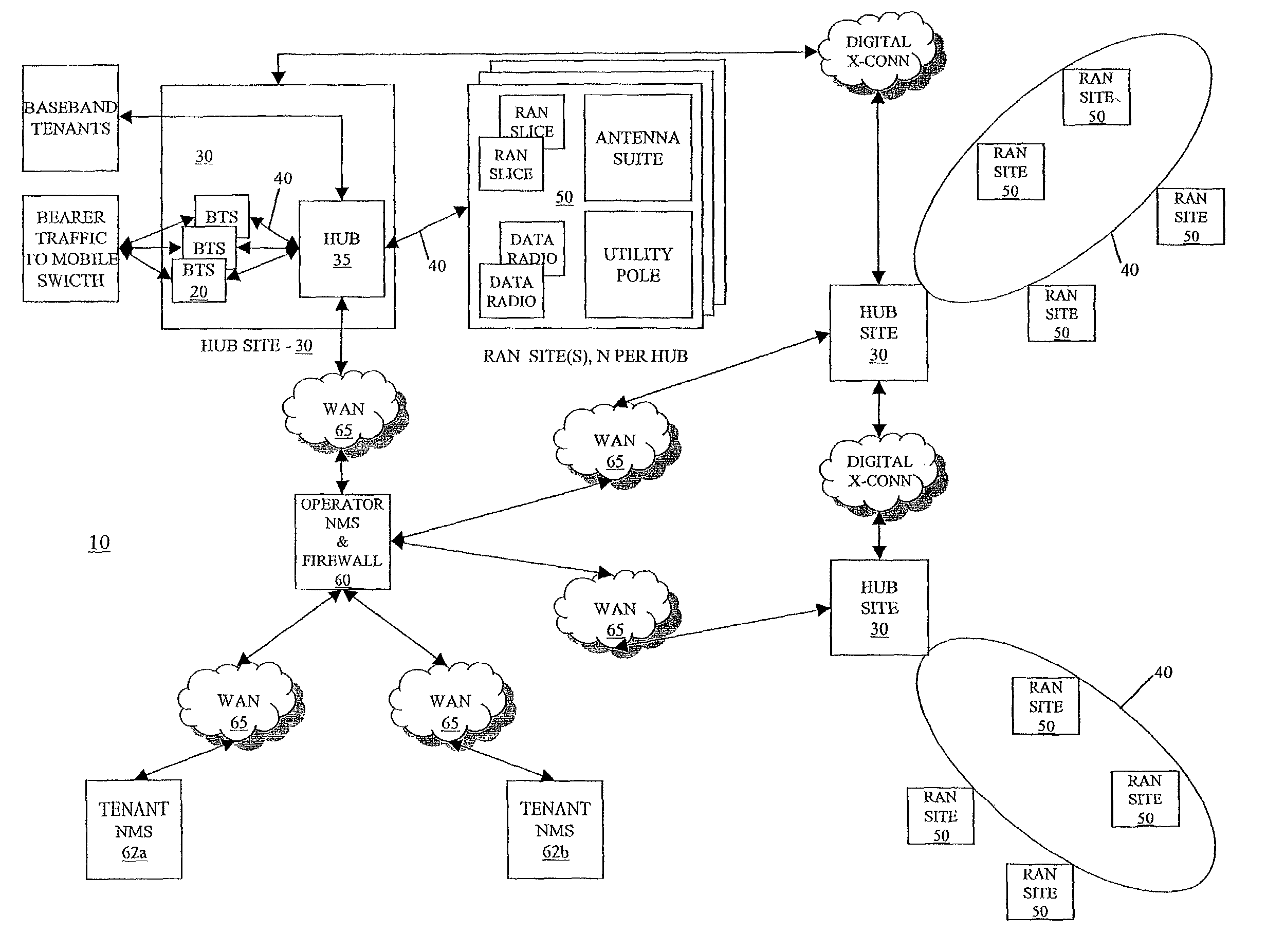Operations and maintenace architecture for multiprotocol distributed system
a distributed system and multi-protocol technology, applied in the field of wireless telecommunication, can solve the problems that the out-of-way location of the tower does not fully address the capacity or coverage needs of each and every wireless operator, and achieve the effect of preventing unnecessary network traffic and minimizing signaling
- Summary
- Abstract
- Description
- Claims
- Application Information
AI Technical Summary
Benefits of technology
Problems solved by technology
Method used
Image
Examples
Embodiment Construction
[0027]Turning attention now to the drawings more particularly, FIG. 1 is a diagram of an open access system 10. The open access system 10 is an open access network supporting a multitude of wireless voice, data, video services and applications. Wireless Service Providers (WSP) and Wireless Internet Service (WISP) Providers, commonly known herein also as tenants, may use open access system 10 to either enhance or replace existing networks, wired or wireless, or to develop new networks.
[0028]Open access system 10 is a multi-frequency, multi-protocol Radio Frequency (RF) access network, providing cellular, Personal Communication Services (PCS), and wireless data coverage via a distributed RF access system. Open access system 10 is comprised of base transceiver stations (BTSs) 20, located at hub sites 30. The base stations 20 are connected via high speed data links 40 to distributed RF access nodes (RANs) 50. The system 10 is, in effect, a signal distribution network and associated mana...
PUM
 Login to View More
Login to View More Abstract
Description
Claims
Application Information
 Login to View More
Login to View More - R&D
- Intellectual Property
- Life Sciences
- Materials
- Tech Scout
- Unparalleled Data Quality
- Higher Quality Content
- 60% Fewer Hallucinations
Browse by: Latest US Patents, China's latest patents, Technical Efficacy Thesaurus, Application Domain, Technology Topic, Popular Technical Reports.
© 2025 PatSnap. All rights reserved.Legal|Privacy policy|Modern Slavery Act Transparency Statement|Sitemap|About US| Contact US: help@patsnap.com



